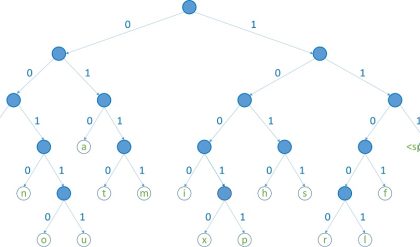The crucial difference between Analog and Digital Communication is that Analog communication uses analog signals for transmission and reception of data while digital communication uses digital signals for transmitting and receiving data. Analog signals are the continuous time-varying signal while digital signals are those which consist of discrete values.
Digital communication provides various advantages such as it is immune to noise and distortion as it possesses greater signal to noise ratio. The uses of repeaters in case of digital communication improve the SNR (Signal to Noise Ratio) further. Moreover, digital communication requires less power than analog communication.
The other differences between Analog and Digital Communication can be understood with the help of comparison chart and key differences.
Content: Analog and Digital Communication
1. Comparison Chart
2. Definition
3. Key Differences
4. Conclusion
| PARAMETERS | ANALOG COMMUNICATION | DIGITAL COMMUNICATION |
| Definiton | Analog Communication is the technology which uses Analog signal for the transmission of information. | Digital Communication is the technology which uses digital signal for the transmission of information. |
| Noise and Distortion | Get affected by Noise | Immune from Noise and Distortion |
| Error Probability | Error Probability is high due to parallax. | Error Probability is low |
| Hardware | Hardware is complicated and less flexible than digital system. | Hardware is flexible and less complicated than Analog system. |
| Cost | Low Cost | High Cost |
| Bandwidth Requirement | Low bandwidth requirement | High bandwidth Requirement |
| Power Requirement | High power is required | Low Power Requirement |
| Portability | Less Portable as the components are heavy | More portable due to compact equipments. |
| Modulation Used | Amplitude and Angle Modulation | Pulse coded Modulation or PCM, DPCM etc. |
| Representation of Signal | Analog signal can be represented by sine wave. | Digital signal is represented by square wave. |
| Signal Values | Consists of continuous values | Consists of discrete values |
| Example of Signal | Analog signal comprises of voice, sound etc. | Digital signals are used in computers |
Definition of Analog Communication
In analog communication, the data is transferred from transmitter and receiver with the help of analog signal. Analog signal possesses continuous varying amplitude with time. Any type of data such as voice, sound etc. can be transferred through an analog signal.

Firstly, the data needs to be converted into electrical form. As voice, sound is non-electric in nature, it can be converted into electric form with the help of transducer. Then this signal is passed through the communication channel.
Analog communication is appropriate for short distance communication. Although, we can also use it for long distance communication with the help of analog modulation technique such as amplitude modulation and angle modulation.

Modulation is the process of multiplying the low-frequency information signal with a high-frequency carrier signal. Then, this signal is transmitted through the channel. Thus, one modulator is required at the transmitter end, and one demodulator is connected at receiving end for retrieving the original signal.
The major drawback of Analog Communication is that the strength of the signal starts diminishing with the increase in the distance travelled. Thus, the signal to noise ratio starts getting degrade. Moreover, noise affects the Analog signal more than digital signal because analog signal is a continuous time-varying signal.
Definition of Digital Communication
Digital Communication is the one which uses digital signals for transmitting information between source and destination. Digital signals are represented by a square wave. This signal consists of discrete values rather than continuous values.

The digital signal is formed by the sampling of the analog signal. The samples of Analog signal are taken, and they are quantized. Digital signals usually consist of signals with two states ON or OFF, i.e. 0 & 1. After the sampling and quantization, the digital signal so obtained is modulated by digital modulation techniques.
PCM (Pulse Coded Modulation), DPCM are some of the digital modulation techniques. The digital communication system also consists of repeaters to intensify the signal which undergoes attenuation due to travelling a particular distance. The repeaters intensify the information signal and suppress the noise signal. Thus repeaters also maintain the SNR effectively.

The significant advantage of using Digital Communication is that it is not deteriorated by channel noise. This is because the digital signal is not a continuously varying signal.
Thus, if noise effects mix with the digital signal, the original signal can be retrieved from the distorted signal. This is because if noise effects one of the points of the signal amplitude, we know the range in which that point lies because digital signal consists of discrete values.
Conclusion
Analog communication is entirely the use of continuous time varying signal for the transmission of information from the sender to receiver. On the other hand, digital communication utilizes the usage of digital technology for sending the information over the channel.
Analog communication is becoming obsolete in contemporary times with the advent of digital technology. The drawback of using digital communication is that it requires more bandwidth for transmission which makes it costly. Thus, if cost is not the issue we can use digital communication for our purpose, but if we need an economical system then choose Analog.

